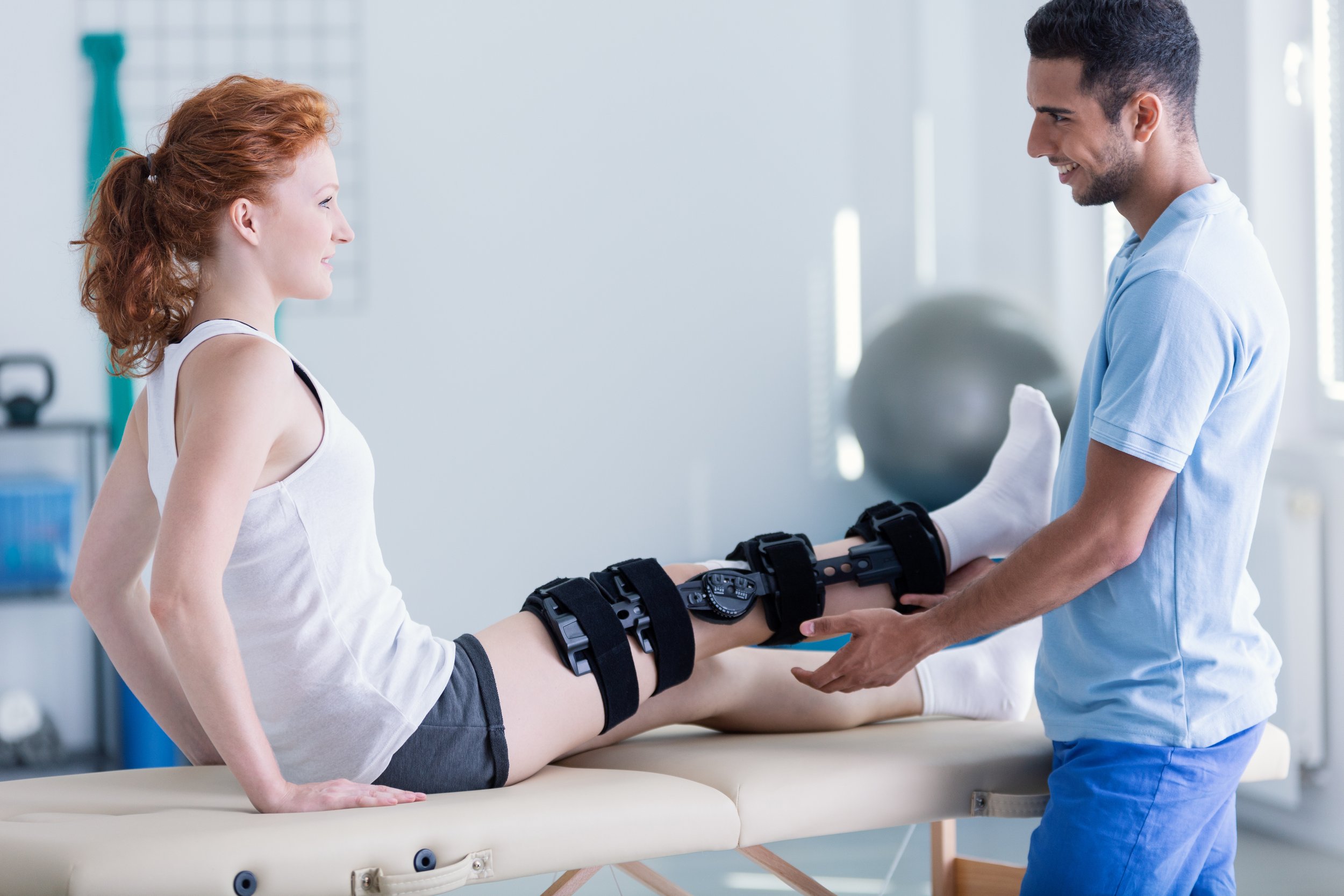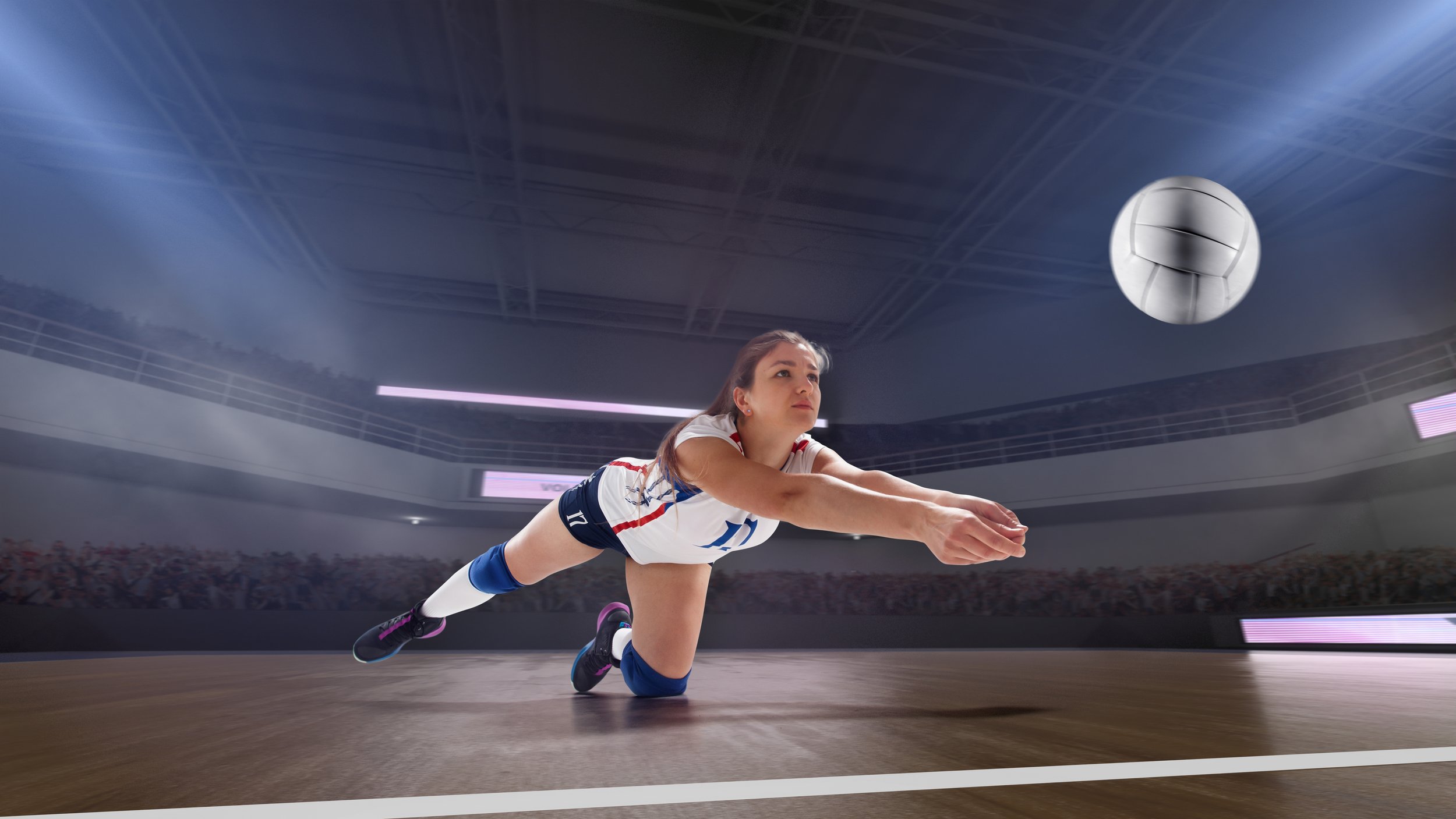Your Top Questions About ACL Tears, Answered
Anterior cruciate ligament (ACL) tears are an increasingly common and dreaded injury. Dr. Sterett, a leading expert in ACL reconstruction at Vail-Summit Orthopaedics & Neurosurgery (VSON), has been the Head Team Physician for the U.S. Women's Alpine Ski Team for over 20 years. Few people have had his experience preventing and treating ACL tears in high-level athletes.
A suspected ACL injury comes with a feeling of uncertainty, along with many questions. Did I tear it? Will I need surgery? How long will I be out of commission?
Here, we will address some of the most common questions Dr. Sterett receives about ACL tears, including symptoms, treatment options, and recovery expectations.
Why Is the ACL Important?
The ACL provides stability to the knee and prevents abnormal rotational movement, like cutting and pivoting activities. Without a functioning ACL, the instability of the knee creates a significant risk to the protective cartilage of the knee. Without this protective cartilage, arthritis will develop. Without an ACL for an extended time, you may experience significant instability, an increased risk of further damage, or chronic pain from osteoarthritis.
How Do ACL Tears Occur?
ACL tears are typically caused by sudden movements that forcefully twist or place too much strain on the ligament. Landing awkwardly from a jump, making a sudden stop or pivot while running, or receiving a direct blow to the knee are all causes of ACL tears. In other words, the ACL can tear through contact or non-contact mechanisms. ACL injuries are most common in sports like soccer, skiing, lacrosse, tennis, basketball, and football.
Additionally, other factors can increase the risk of an ACL tear. Risk factors that you can control through proper therapy include muscle imbalances or improper technique or form in jumping and landing sports. Previous injury to the knee and being born with "loose joints" can also contribute to risks to the ACL. Female athletes are, on average, five times more likely to tear their ACL than males due to a combination of anatomical and physical differences.
Dr. Sterett's career has been centered around risk factors, prevention, and treatment of ACL tears in high-risk female athletes. Read more about female risk factors.
What Are the Symptoms of an ACL Tear?
Immediate pain and profound swelling are the two most common symptoms of having just torn your ACL. If an athlete falls, hears a "pop," and has immediate swelling in the knee, there is a greater than 90% chance that they have torn their ACL. Other symptoms of having just torn your ACL may include:
A large amount of swelling within the first two hours of injury
Pain
Feeling like your knee might buckle if you put weight on it
Decreased range of motion from the swelling
After a few days, the swelling will subside. Pain is no longer the predominant symptom, but instability takes over. The instability is activity-related, not while sitting around. This instability is what puts the ACL-deficient knee at risk.
What Should I Do If I Think I Tore My ACL?
If you experience symptoms of a torn ACL, seek medical attention as soon as possible. You should not try to diagnose or treat the injury yourself, but here are some steps you can take:
Call an orthopedic doctor right away. Dr. Sterett offers same-day and urgent care appointments at VSON clinics in Vail and Edwards. Call (970) 476-7220 for immediate assistance. Even if you aren't in Eagle County, Dr. Sterett is available to consult about your knee through telehealth!
To manage the ACL injury until you see a physician, elevate your leg above the level of your heart and apply ice for 15-20 minutes at a time, 3-4 times per day. Tylenol is the preferred pain reliever. Ibuprofen and Aleve are anti-inflammatory medications but also increase the risk of bleeding. As the immediate swelling within the knee is due to blood, an anti-inflammatory may increase the bleeding within the knee and actually increase the swelling. As a result, we often hold off on this medication class until the injury's acute phase is behind us. Rest, ice, compression, and elevation (RICE) are still the best ways to get the swelling of a torn ACL down.
How Is an ACL Tear Diagnosed?
ACL tears are diagnosed through a physical examination and imaging tests. Dr. Sterett will look for signs of an ACL tear, including pain and swelling, and will check your knee's stability and range of motion. The most common physical exam tests are the Lachman and Pivot Shift tests to diagnose an ACL tear. He may also order imaging tests such as an MRI or x-ray to confirm the diagnosis, the extent of the injury, and whether there is any other damage that may have occurred.
Will I Need Surgery for a Torn ACL?
This is the big decision-making tree. If you only read one section of this blog, read this!
If you have only torn your ACL, have not done any other damage to the cartilage of the knee, and are relatively sedentary or do not engage in cutting activities, a trial of non-operative management may be right for you.
The higher your activity level, especially with twisting sports, the more you should consider surgical intervention to fully recover and lessen the risk to your knee down the line. If you have done other damage to your knee, in addition to the ACL, you may need surgery even if you don't participate in higher-level sports.
Unfortunately, approximately 70% of the ACL injuries coming off our ski hill in Vail also involve damage to the meniscus or articular cartilage. These concomitant injuries often need surgery, and the ACL can be fixed simultaneously.
Can Stem Cells Heal a Torn ACL?
While stem cell therapy alone can't repair a torn ACL, Dr. Sterett often uses it in conjunction with a traditional ACL reconstruction hoping to aid in the healing process and improve long-term results, including:
Faster remodeling of the ACL graft, which results in a shorter recovery time
Increased ligament strength
Reduced pain and swelling after surgery
Lower risk of developing arthritis later in life
We are all trying to figure out how much adding these bone marrow concentrates, or stem cells, helps the recovery process following ACL reconstructive surgery. As a result, nearly every ACL reconstruction patient of Dr. Sterett in the past five years has had stem cells added to their new ACL at the time of surgery.
Learn more about adding stem cell therapy to your ACL reconstruction.
How Is ACL Surgery Performed?
ACL reconstruction is usually performed using arthroscopy, a minimally invasive technique that results in the following:
A shorter surgery (allowing you to go home that day)
Smaller incisions, therefore, less scaring
Reduced pain and stiffness
Faster recovery
What are my choices with ACL Surgery?
We have so much to talk about. Are you a candidate for non-operative management? ACL repair where we sew the torn ligament back to the bone? Or do we need to replace the torn ACL with a new graft?
Ninety percent of the time, we replace the ligament with a new graft through surgery.
Your next decision-making tree involves deciding whether to use a donor graft, also called a cadaver or allograft, or use some of your own tissue. There is a great deal to learn just about which of these choices to make.
Finally, if you are going with your own tissue, should we use your hamstrings, patellar tendon, or quadriceps tendon? Our job is to educate you about when each of these is the right choice.
In either case, we must remove the old, torn ACL and replace it with the new ligament. Dr. Sterett has performed thousands of each of these graft choices.
Learn more about ACL graft options.
What Is the Recovery Time for ACL Surgery?
For uncomplicated ACL reconstruction, patients are typically on crutches for about 10 days until they can protect their knee with weight bearing. ACL reconstruction therapy is divided into sections:
0 - 6 weeks - Focus on decreasing swelling and improving range of motion without working on strengthening. This is designed to reduce the risk of scar tissue which otherwise could require more surgery.
6 - 12 weeks - In this second phase of recovery, we begin working on strength, but we do this in a "double leg" fashion, meaning we do exercises such as squats, dips, and stationary biking with both legs to help protect the surgical leg.
12 weeks - 6 months - In this phase, we begin single leg strengthening, learning to accept a load, and more sport-specific exercises for the sports you would like to engage in.
Returning to Sports
Some sports that do not require cutting or pivoting are allowed within three months. These would be activities such as swimming, biking, treadmill running, and some straight-ahead road running.
Cutting and twisting types of sports are typically allowed between six and nine months after surgery once the patient has recovered more than 90% of their strength back.
Recovering from ACL surgery can be challenging, particularly for athletes who are used to being active and may be eager to get back to their sport. Like a good wine or a cake baking in the oven, sometimes mother nature needs a little bit more time to strengthen the graft, regardless of how strong you can return after surgery. Patience…
Dr. Sterett and his team will tailor a rehabilitation plan to your individual needs. Before determining if you are ready to return to sports, they will conduct functional testing and consider various factors, including if:
It's been over six months (the new ligament takes six to 12 months to heal and become strong enough for unrestricted sports)
You have regained full range of motion
You have all your strength back
You have no scar tissue
You have good endurance
Contact Dr. Sterett: Vail's Highest-Rated ACL Surgeon
Dr. Sterett and his team at Vail-Summit Orthopaedics & Neurosurgery are the trusted choice for those seeking expert care for ACL knee injuries.
With over 20 years of experience performing ACL reconstruction in both professional and recreational athletes, Dr. Sterett is renowned for getting his patients back to their highest level of performance.
Contact Team Sterett today by calling (970) 476-7220 or request a consultation using our online form.





